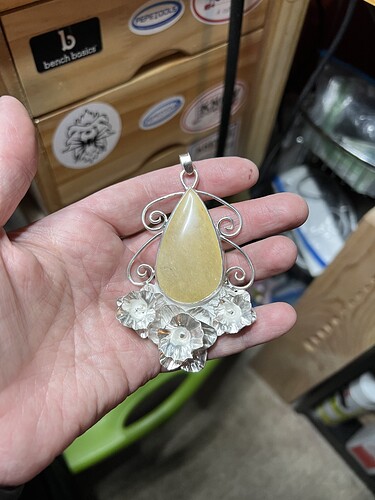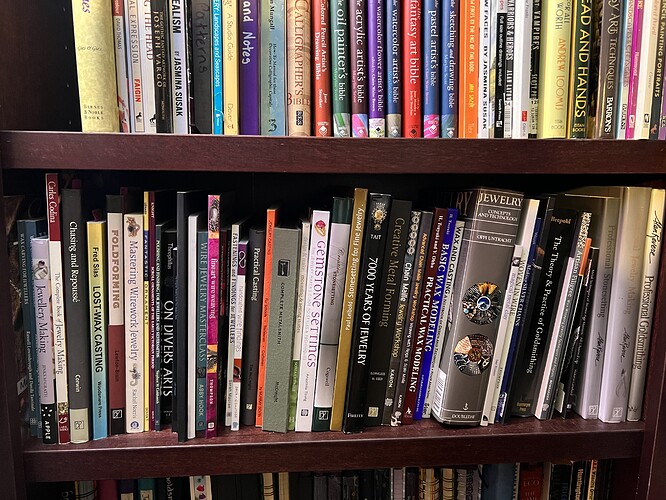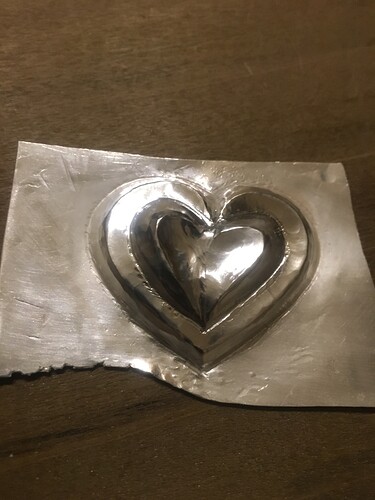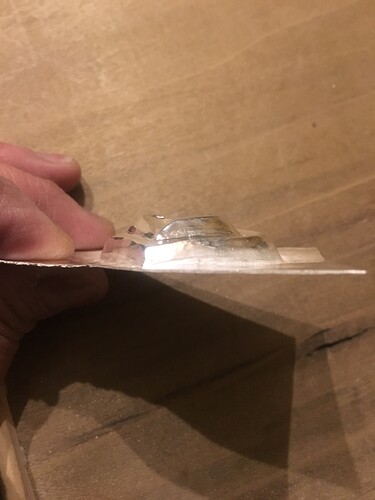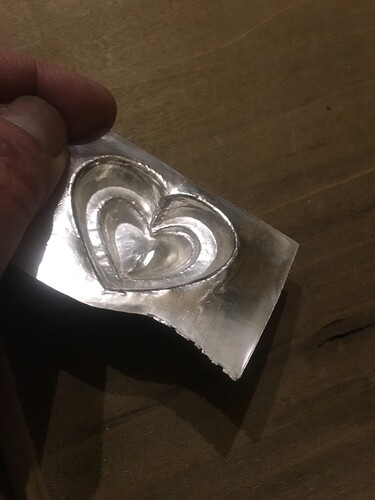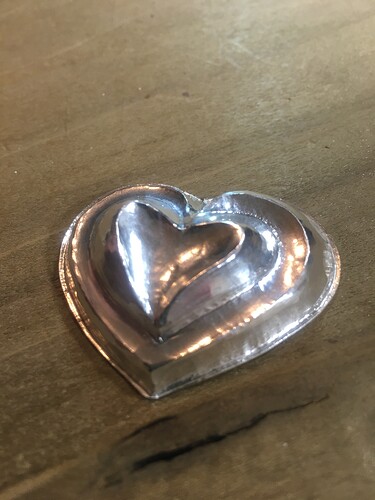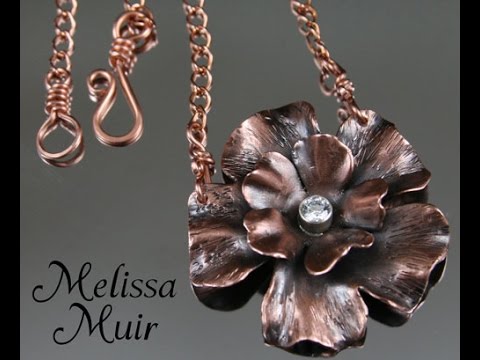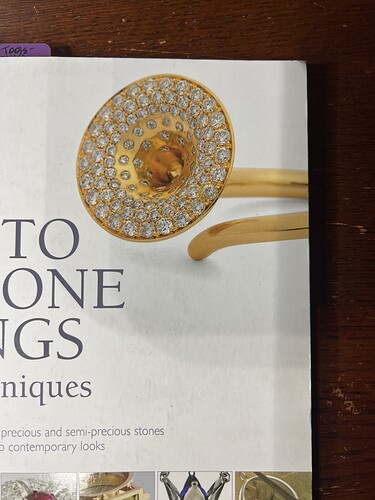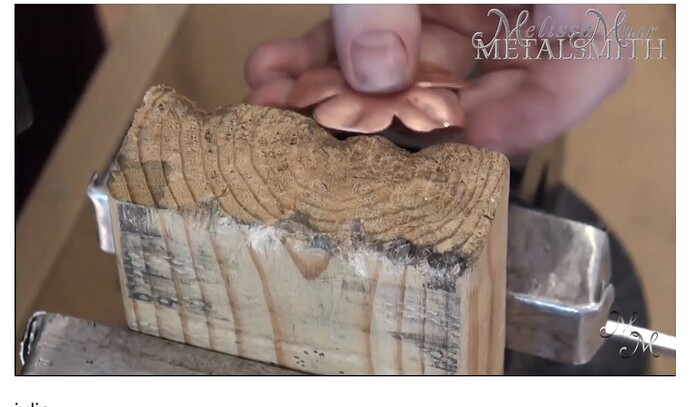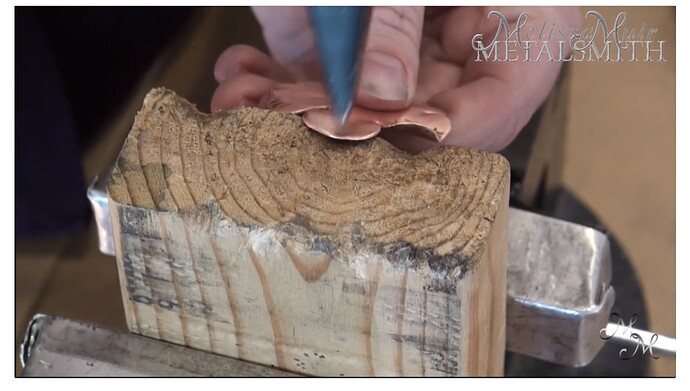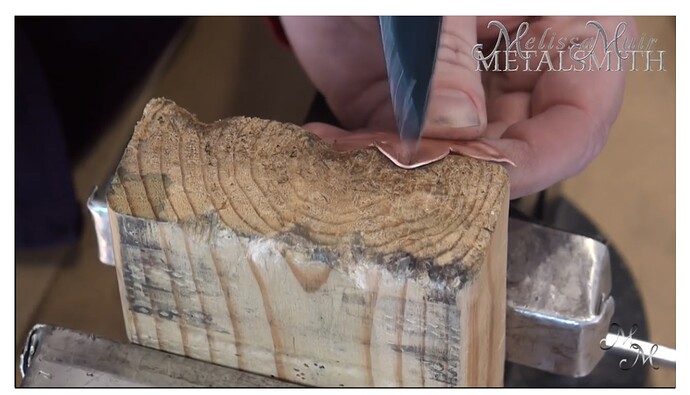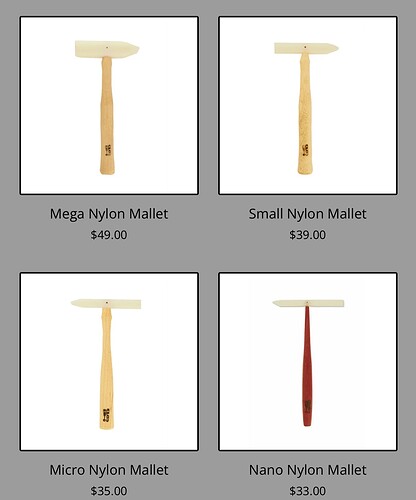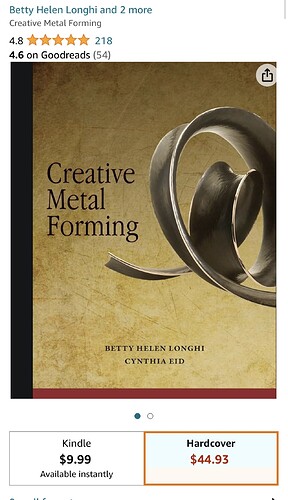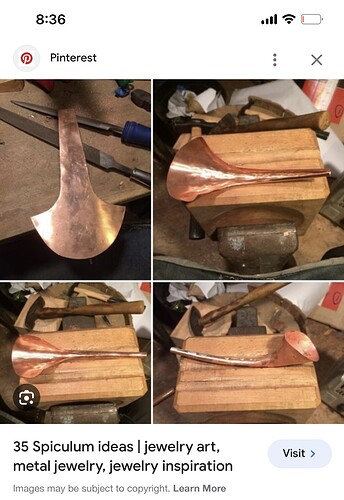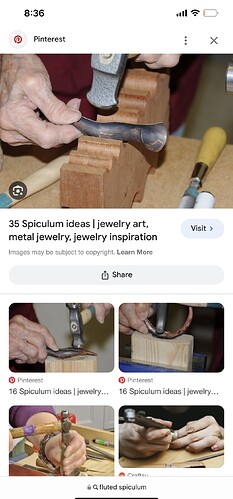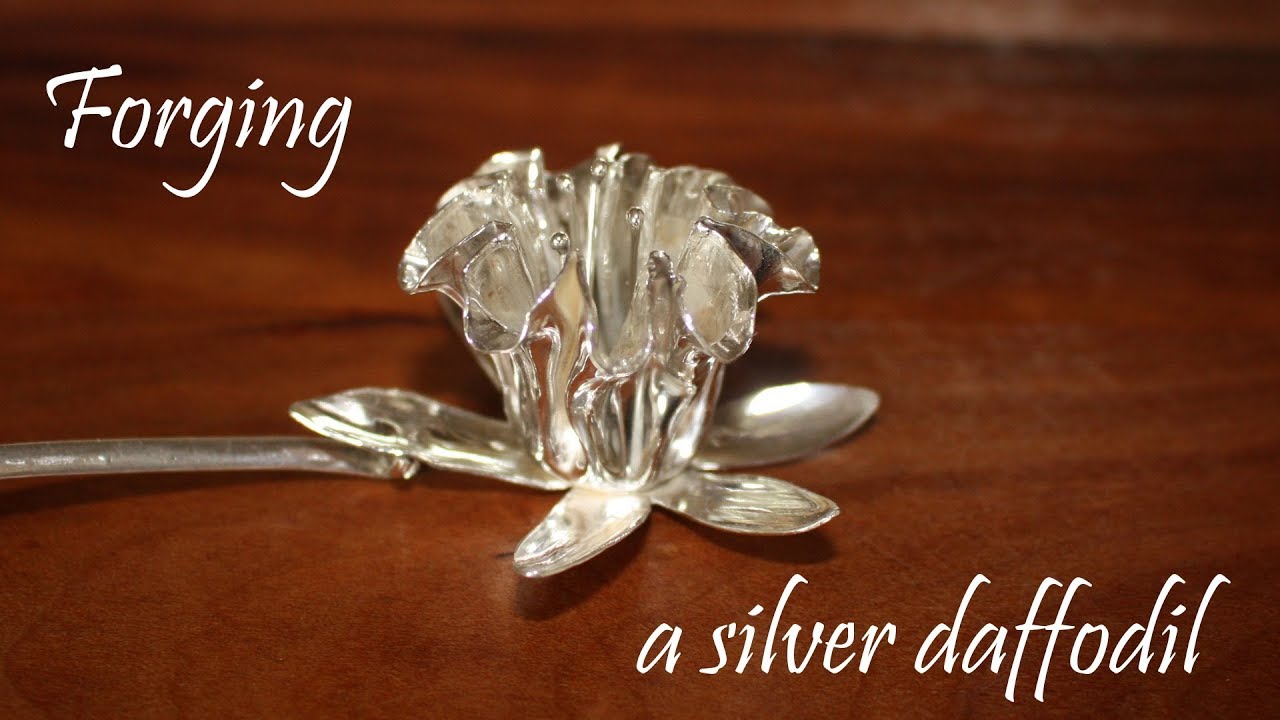Y’all, I finally figured it out!!! So I’m going to share this so the information is just out there floating around. I tried doing what Nicole Ringgold did in her video. She took a disc and put it into a large dapping block sphere then a smaller dapping block sphere and partially melted it to form the frilly edges of the daffodil trumpet. I ended up figuring out a different method that I like and doesn’t require melting, so I’m going to share it. Pierce or punch out a circle and hammer the edges with a cross-pein all the way around until the edges flare and frill. Anneal, pickle, rinse, dry, put it in warm soft pitch. Next, get several dapping punches, the largest of them not being as big as the disc or enough to cover the outer flared edges. Start with the largest dapping punch working down to the smallest, put it in the center of the disc and whack it hard three times. Then do the next size down, whack it hard three times. Anneal, pickle, rinse, dry, put it back in the pitch, get the next size down dapping punch, stick it in the center of the disc, whack it hard three times, next size down, whack it hard three times, anneal, etc etc. until you get the trumpet either deep enough to your liking OR the metal at the center starts to split open. I found that starting with the largest dapping punch gives the metal more leeway as you work your way down whereas if you use only one punch size, it splits much faster because that one punch is putting all the force on one spot on the meal so if you use several different sizes from largest to smallest it gives you more working room to stretch the metal out. As far as texturing the outer side of the trumpet, fill the trumpet with pitch after you’ve stretched and annealed it, put it in the pitch, use either a line stamp or a cross-pein to tap the sides and create the lines you usually see on daffodil trumpets. Maybe I’ll post a picture of what I made. The stone setting isn’t perfect in what I did, I’m still trying to develop my skills in that area, but the daffodils turned out ok. I’m also not happy with the wires either because they’re totally uneven and the solder job was a total bomb. I’m sure there are other methods you could use for making daffodils, but this one worked out pretty well. I made a large pendant with pale yellow aventurine for my mother. Now that I’ve got the daffodil thing kinda figured out, I’m planning on making one for myself using yellow chalcedony that’s a brighter yellow. And doing a better job with the stone setting and wires next time around, but hey it was a learning experience.
I finished reading the Foldforming book by the way, I’m on to a couple of stone setting books I got! I actually have an addiction to buying books and reading. I had to buy TWO new seven foot bookshelves in addition to the 6 foot one and a huge ledge across the back of an enormous desk that are full of books. I’m developing quite an expansive library of goldsmithing, gemology, lapidary, and jeweler books now. I MUST read every single one! I ran out of bookshelf room like 20 years ago… but kept buying books. I had books stuffed in every box, corner, nook, and cranny in this house, like it was bad, but now they all have a home. Here’s my jeweler and books on related topics, minus the ones I’ve got out currently reading. The shelf below has the journals I’ve filled with notes from goldsmithing and jeweler videos I’ve watched (they don’t take up the whole shelf, there’s other stuff, too), and the one above it has mostly books on art and some random history books. I haven’t read all these yet, but I’m going to.
If you see any books I don’t have that you know of, I’m all ears!!! I have two more books coming and about $3,000 worth of jeweler books sitting in my Amazon cart right now that I’m slowly going through and buying.
